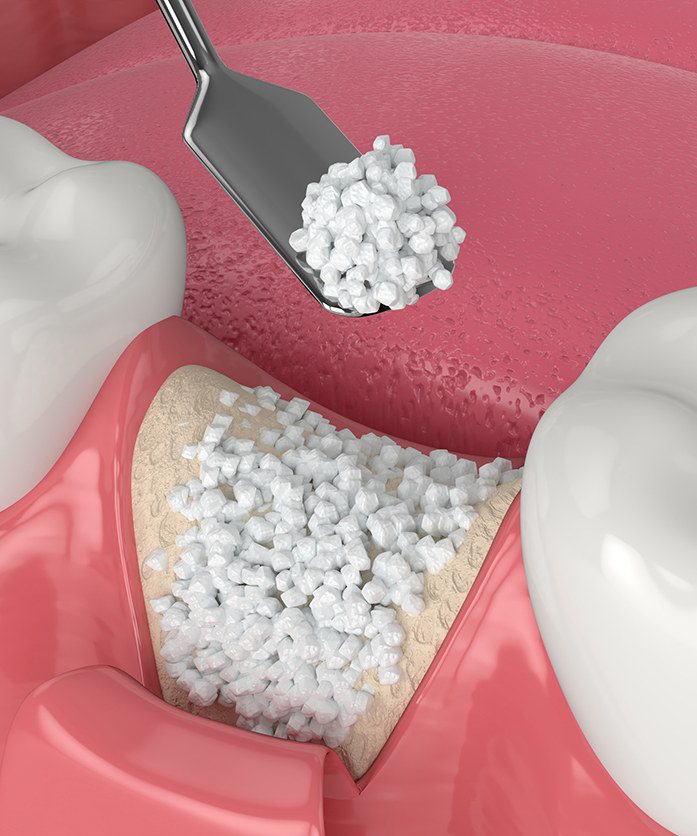Bone Grafting
Bone grafting is dental surgery that can be performed on site at the Dr. Wayne Dionne Dental Clinic. Although common, bone grafting is a little-known procedure. While its name suggests a highly complex procedure, it turns out to be relatively simple and performed with a high success rate.
What Is a bone Graft?
Bone grafting is a surgical procedure designed to replace bone volume that has become too low, generally with a view to subsequently receiving a dental implant.
This procedure offers many advantages. Not only does it allow thinned bone to regenerate to provide a solid base for implant placement, it also improves the functionality and appearance of the jaw, restoring comfort and aesthetics to the patient.
Situations leading to bone grafting
When one or more teeth are missing for a long period of time, the jawbone lacks stimulation, resulting in loss of volume and rapid decay. In addition to missing teeth, other factors can cause this bone loss, including trauma, cysts, tumors and periodontal disease.
Bone grafting is an effective solution for this type of situation.

Different Types of Grafts
Your dentist will explain the different options available and help you make a decision based not only on your personal preferences, but above all on your specific needs.
There are four types of bone grafting, each with its own particular characteristics.
Autograft
In this case, the graft is taken directly from the patient, usually from another part of the jaw or another bone site in the body. This method uses the patient's own tissue, which promotes better integration and reduces the risk of rejection.
Allograft
Here, the bone comes from an external human donor. This type of graft is carefully prepared and processed to ensure its safety and efficacy. Allografting is a good alternative when autografting is not possible or preferable.
Xenograft
The graft comes from an animal, usually a bovine, and is also processed to be safe and compatible with the human body. Xenografts are often used when large quantities of material are required.
Synthetic graft material
Graft material is made from synthetic biomaterials that mimic the structure and function of natural bone. These materials are designed to be biocompatible and stimulate bone growth.
Your dentist will help you understand the advantages and disadvantages of each option, so you can choose the one that's best for you. The goal is to ensure the best possible integration and restore the functionality and aesthetics of your jawbone, safely and effectively.


How does bone grafting work?
Dental bone grafting, performed under local anaesthetic, generally takes between one and one-and-a-half hours.
The procedure begins with an incision that lifts the gum and provides access to the bone. This allows the surgeon to assess the amount of bone required for the graft. Next, the graft is covered with a protective membrane to hold it in place, then the gum is repositioned and sutured. Depending on the type of stitches used, they either dissolve naturally in 7 to 10 days or are removed in a similar timeframe.
This procedure is usually painless. To ensure your comfort after surgery, antibiotics and painkillers will be prescribed.
Healing time varies from patient to patient. In general, it takes between 4 and 6 months for your dentist to judge that healing is sufficient before proceeding with the installation of dental implants.
Are you considering a dental implant?
First, make sure you have enough bone volume for successful implantation. At his Edmundston dental clinic, Dr. Wayne Dionne and his team offer professional advice tailored to your situation. Schedule an appointment today to discuss the best options for your oral health.
Would you like more information about our clinic or any of our services?
Contact us today
A member of our passionate team looks forward to meeting you and answering all your questions!
